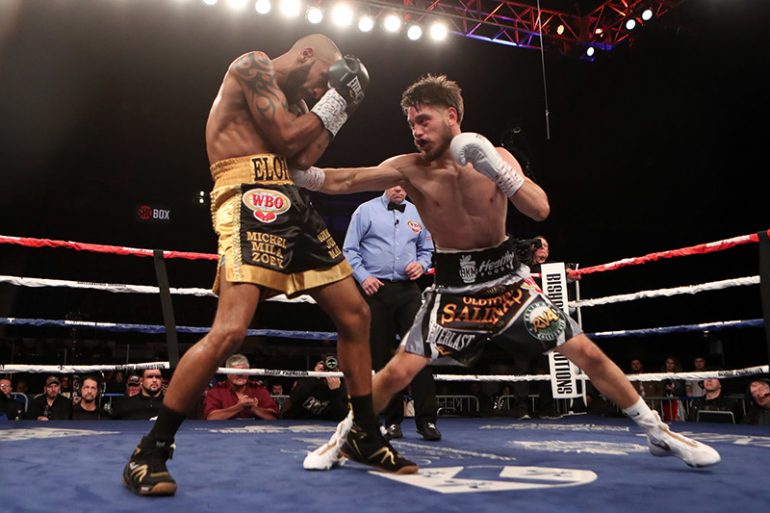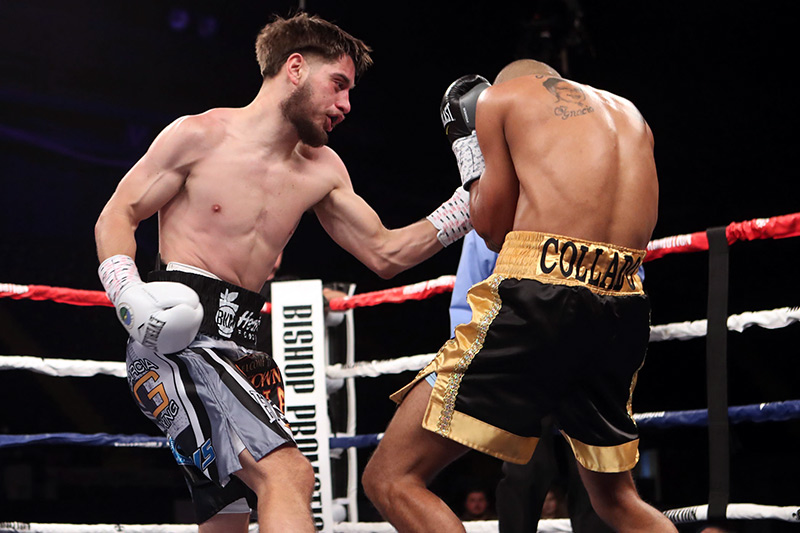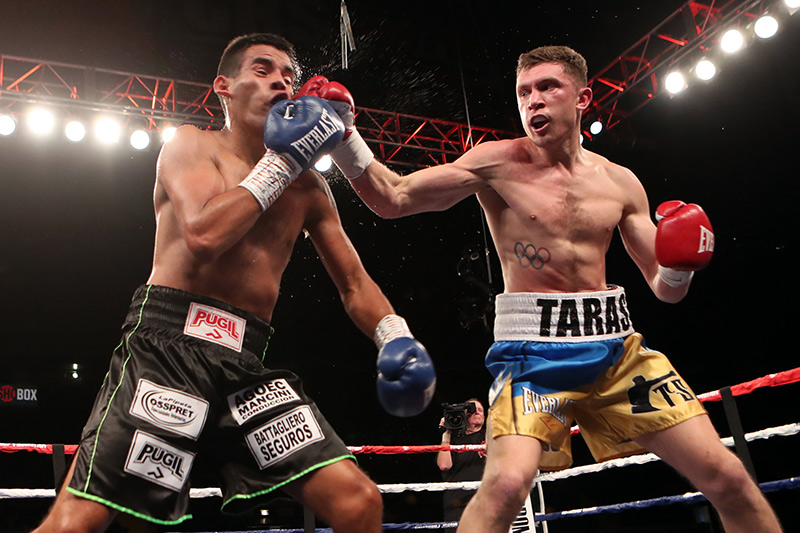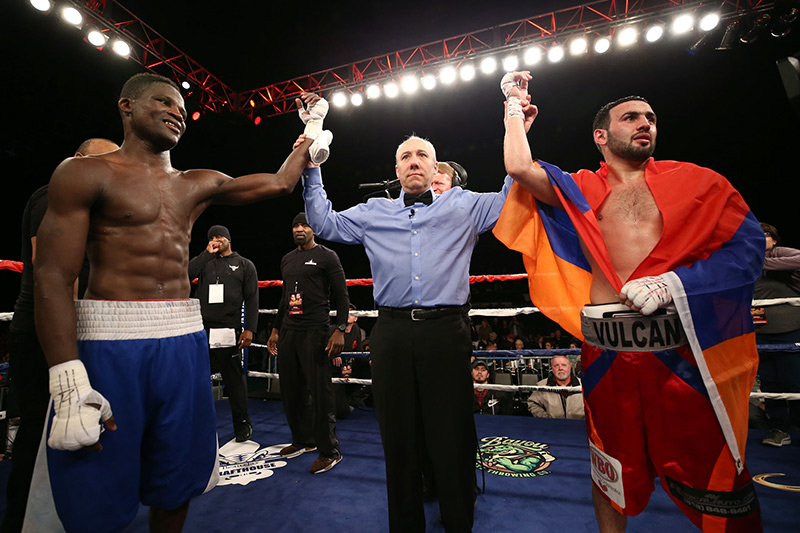The Travelin’ Man returns to Shreveport: Part Two

Please click here to read Part One.
Friday, January 31 (continued): Vince Lombardi, a coach so legendary that the NFL’s championship trophy is named for him, built much of that legend on the strength of a single running play: The power sweep. Relentless repetition honed his players’ execution of that play to its finest edge and his confidence in it was such that he not only dared his opponents to stop it; he conducted eight-hour clinics describing the play’s deepest intricacies to other coaches. One of those coaches was John Madden, then a defensive assistant at San Diego State, who attended a June 1963 workshop conducted at the University of Nevada in Reno, Nevada. Four-and-a-half years later, Madden was the linebacker coach for the Oakland Raiders team that opposed Lombardi’s Packers in Super Bowl II. Despite being given complete knowledge of how the play worked and the specific adjustments his players had to make to stop the sweep, the Raiders still lost 33-14.
Featherweight Ruben Villa has a similar “Try to stop me” attitude about the way he fights and, at least so far, no one has done it. On paper – and in the ring – Alexei Collado did what he should have done against a mobile, points-oriented boxer like Villa: Apply non-stop pressure; flood the zone with punches and force his opponent toward the ropes and corners. That game plan, in part, was intended to neutralize what Villa showed everyone in his three previous appearances on “ShoBox: The New Generation”: Balletic footwork, superb defense, needle-sharp jabs and clean counters that move judges to award him round after round. In his last three fights, Villa accumulated 831 of a possible 840 points against Ruben Cervera, Luis Alberto Lopez and Jose Vivas and, despite executing the game plan well, Collado still lost 99-91 and 98-92 (twice). That’s because Villa, against his best opponent to date, managed to raise his level of performance high enough that he maintained – and, in some areas, increased – his previous level of control. Please consider:
* Villa averaged 11.3 landed jabs per round and 34.5% accuracy against Cervera, Lopez and Vivas. Against Collado, he averaged 11.6 landed jabs per round and connected with 29% precision. The average featherweight lands 4.1 jabs per round at 18% accuracy.
* Villa averaged 50.3 punches per round against Cervera, Lopez and Vivas, who averaged a collective 73.3. Against Collado, his output soared to 62.8 to answer the Cuban’s 77.6-punch-per-round attack.
* Villa averaged 20.1 total connects and 8.9 landed power punches per round versus Cervera, Lopez and Vivas but against Collado, those numbers increased to 21.7 and 10.1 respectively.
* Villa also wanted to be more aggressive with his punch selection and against Collado, he succeeded to a degree. While jabs still made up the majority of his total output, power punches comprised a larger percentage of his total output (34.8% in his last three fights, 36.6% against Collado).
* Part of that increased aggressiveness was expressed by his body punching, which made up only 20% of his total connects in his previous three fights but 28.6% against Collado. The latter total is just below the 29.5% CompuBox average.
* Against his most seasoned and dangerous opponent so far, Villa still allowed precious few punches to get through the guard (20% overall, 18% jabs, 21% power) while landing a far higher percentage of his own blows (35% overall, 29% jabs, 44% power). Yes, these numbers represent a slight decline from his previous efforts, as he allowed 17% overall, 14% jabs and 19% power and landed 40% overall, 35% jabs and 51% power, but the plus-minus differentials remain outstanding.
* Finally Villa demonstrated an excellent finishing kick as he out-landed Collado 119-66 overall, 57-30 jabs and 62-36 in Rounds 6 through 10, despite averaging 61.2 punches per round to Collado’s 81, extending his final leads to 217-153 overall, 116-65 jabs and 101-88 power. In the CompuBox round-by-round breakdown of total punches – relevant because clean punching is a key judging factor and because fights are scored round by round instead of in totality – Villa prevailed 9-1 with only the fourth (23-22 Villa) and fifth (23-20 Collado) being close. The official scoring mirrored that dynamic as Pat Dayton saw Villa ahead 99-91 while Mickey Lofton and Keith Thibodeaux submitted 98-92 scorecards.

Ruben Villa (left) takes it to Alexei Collado. Photo by Dave Mandel/SHOWTIME
As dominant and as brilliant as Villa was, head trainer Max Garcia said the Californian showed just a taste of his full capability against Collado.
“His effort was great and people were in awe of his footwork but being his coach and watching every day what he can do with his feet, I say he implemented about 35% of his footwork,” said Garcia, who has known Villa since the fighter was five years old. “He could have used more angles to initiate more contact. He played with that guy. A few times he did do the pivot – the right hook was open; the left hand was open – but I wanted him to do more. I was happy with what he did but he could have done more.”
How much more?
“I say he showed about 40% of his potential,” he said. “We haven’t seen the best of him yet. He’s 22 and he’ll develop his man-strength. By then his intangibles will be much stronger. He’ll be faster; he’ll be quicker and will be more selective with hard, hard punches.”
Still, Garcia was satisfied with Villa’s determination, concentration and willingness to execute the game plan, no matter the circumstance. However there were points, especially in Rounds 4 and 5, when Villa faced adversities that brought him to moments of reckoning.
“I know he got popped a couple of times; for a little while, he was too close to the guy and you don’t want to be that close to that powerful a puncher,” Garcia said. “He felt he could control him inside and he took that upon himself. Collado was being rough and was desperate and was fighting out of character. (Villa) didn’t want to be against the ropes taking forearms and elbows, low blows and an occasional headbutt. (Collado) was also stepping on his foot and landing a punch but the referee (Mark Nelson) didn’t see that. Ruben felt that and, after that, he stayed in the middle of the ring. He held him when he had to because (Collado) was strong and rough – he’s about the roughest we’ve seen yet. We reinforced things in the corner and he adjusted very well. He stayed with the plan because he knew he would win this fight if he did the right things.”
Garcia envisions Villa going after a title in early 2021.
“It’s because of the politics of the situation at featherweight; everybody is tied up with big promoters and those promoters have their plans for their champions,” he said. “We’ll probably have to take the hard road and become a mandatory. He’s probably going to become the most avoided guy in the featherweight division.”
Garcia said that Villa’s hometown of Salinas, California, has scheduled a parade in his honor on July 24 and if the trainer’s vision for his charge comes to pass, more parades will be in his future.
*
The record and the calendar indicated that 34-year-old Taras Shelestyuk, who was coming off back-to-back layoffs of 20 months and 328 days, should have been victimized by ring rust, especially against Luis Alberto Veron, whose last fight had taken place just two weeks earlier. And, at least for the first nine minutes, Shelestyuk wasn’t quite the same fighter in terms of his work rate, jab production and power accuracy, as he averaged 55.3 punches per round compared to 74.6 in five previous CompuBox-tracked fights, 6.3 jab connects per round compared to 9.1 and 36% power precision compared to 48.6%. Maybe the chilly conditions inside the arena were to blame because from Round 4 onward, the form that won him an Olympic bronze medal in 2012 and forged a 17-0 (with 10 knockouts) professional record proved too much for the South American. In Rounds 4 through 10, Shelestyuk raised his output to 70.4 punches per round (including a fight-high 83 in the 10th), his power accuracy to 48% during that span and prevailed 31-29 in landed jabs to extend his final leads to 178-135 overall and 128-101 power and earn scorecards reading 98-92 (twice) and 97-93. Like Villa, Shelestyuk led 9-1 in the CompuBox round-by-round breakdown of total connects while also prevailing 61-35 in landed body shots.

Taras Shelestyuk (right) vs. Luis Alberto Veron. Photo by Dave Mandel/SHOWTIME
Shelestyuk is still a few fights away from his ultimate objective – a world title opportunity – and if he is to give himself the best chance of winning, he must remain active and he must also remain visible. Although the clock is ticking loudly, the Ukrainian can take heart in the fact that Manny Pacquiao, the current WBA beltholder and a fellow southpaw, just turned 41.
*
In his two previous appearances on ShoBox, Zhora Hamazaryan out-landed Thomas Mattice by a combined 284-190 overall and 228-120 power yet came away with a split decision loss in fight one and a draw in fight two. The pattern continued tonight for the California-based Armenian as he picked up a second draw against Ugandan southpaw Sulaiman Segawa but, this time, Hamazaryan was the beneficiary of a debatable decision.

Zhora Hamazaryan (right) and Sulaiman Segawa fought to a draw. Photo by Dave Mandel/SHOWTIME
Like Shelestyuk, Hamazaryan looked like a man coming off a lengthy layoff, which, in his case, was 16 months. However unlike the Ukrainian, Hamazaryan never regained the stride that earned him support in the Mattice matches. While some of that can be attributed to the extended hiatus (most of which was spent completing his education), a significant portion of the credit should be given to Segawa, an athletic lefty whose wiles successfully slowed Hamazaryan’s pace from 64.2 punches per round in his previous three CompuBox-tracked fights to 40.6 in the first three rounds and 57.5 for the fight. As a whole, Segawa’s punches carried more steam and he made the most of his advantages in height (one inch), reach (two inches), mobility and marksmanship. While Segawa averaged nearly four fewer punches per round (53.6), his accuracy gaps of 30%-22% overall, 28%-8% jabs and 31.3%-31% power enabled him to achieve connect leads of 130-100 overall, 42-14 jabs and 88-86 power as well as a 5-3 lead in the CompuBox round-by-round breakdown of total connects. The African also prevailed 25-22 in landed body punches, a category Hamazaryan was expected to dominate, given his style. Finally Segawa was the stronger finisher, not just optically (he jolted Hamazaryan in both rounds) but statistically as he led 45-31 overall, 9-3 jabs and 36-28 power to create his final margins.
As mentioned in Part One, Hamazaryan was originally set to face the 12-0 (with 9 KOs) Jerry Perez, who was forced to withdraw due to the flu. Given Segawa’s excellent short-notice performance against Hamazaryan, why not pair him with Perez and see how the Ugandan fares when given the luxury of a full training cycle?
*
After packing our belongings and consuming a couple of small slices of post-fight pizza in the makeshift production office, Andy and I rode back to the crew hotel with stage manager JT Townsend. Once we said our goodbyes, I took the elevator up to my third-floor room and spent the next hour entering the night’s numbers into the master database. Even so, it took me another hour before I felt sleepy enough to switch off the light. Such is the power of the post-boxing buzz.
Saturday, February 1: Although I slept only five hours, I was rested enough to feel energetic and ready to take advantage of the day ahead of me. To aid in the process, I returned to the Market 104 restaurant on the first floor to tackle the breakfast buffet. Normally I’m not a “breakfast person” but because my body clock reacted as if it wer 11 a.m. it might as well have been lunchtime for me. As I was being seated, I noticed a bottle of Tabasco sauce and remembered that I had never tried it before. When I informed my server of this, the native Louisianan reacted as if she had stumbled upon a five-legged albino alligator with a unicorn horn sprouting from its forehead; to her, a person who had not tried hot sauce before was just as alien.
“Are you sure you don’t want to try some Louisiana Hot Sauce?” she asked.
“No, that’s OK,” I replied with a grin. “If you’re going to do something for the first time, it’s best not to take on Mount Everest right away. So do you have any advice as to how to properly apply this to my eggs?”
“Just sprinkle it lightly; a few drops will be more than enough,” she replied.
Because the bottle was already open – and because its vapors were already stinging my nose – I recognized the wisdom of her words. Having watched more episodes of “Man vs. Food” than I care to admit (which I just have), I also ordered a tall glass of milk to deal with any unexpected heat.
The server was right; applied with proper judiciousness, the hot sauce indeed was a flavor enhancer and because I didn’t go overboard, it is something I’d do again. Perhaps next time I’m in Shreveport, I’ll give Mount Everest a try – a respectful try.
After finishing my meal, I checked out of the room, boarded the hotel shuttle to the airport, approached the TSA Pre-Check security line and gained clearance to proceed. Once I did, however, my laptop bag was subjected to a physical search. The reason: I had so many items stuffed in the bag that they hindered the X-ray’s ability to see through my computers. No matter; the delay lasted less than two minutes and soon, I was on my way to Gate 5, where my flight to Charlotte was slated to depart in two-and-a-half-hour’s time.
Moments after settling in and breaking out my laptop, a familiar face came into view: Ruben Villa’s. The reason: He and his team were scheduled to board the Gate 5 flight that preceded mine. While the fighter ventured toward another part of the area, the rest of his team situated themselves in the group of seats behind me. Always eager to engage in boxing talk, I casually walked over and sat down about 10 feet away from them. When someone in the group marveled that it was already February, I found my conversational ice-breaker.
“Time does fly; doesn’t it?” I said with a smile. That’s all it took and over the next 45 minutes, the team and I chatted about last night’s fight, Villa’s place in the featherweight division and where they see the fighter’s career going (during this time, I conducted my on-the-record interview with Villa’s trainer). Shortly after Team Villa boarded their aircraft, I was joined by ace audio engineer Joe McSorley, who I learned would be on my flight to Charlotte.
During the flight, I noticed the two flight attendants were rushing through the beverage service, so much so that one – a bespectacled brunette named Kyler, who bore a facial resemblance to a younger Angelina Jolie – appeared to brush off my request for a can of Pringles. I soon learned the reason for their haste: Just moments after they finished the service the plane was shaken by noticeable turbulence that lasted for several minutes.
Once the shaking stopped, I assumed that my request for chips would fall by the wayside, so I contented myself with the small bag of pretzels and the cup of Coke Zero I did receive. However a few minutes later, Kyler suddenly appeared with the Pringles as well as a heartfelt apology. Better yet, when I reached into my wallet to retrieve my credit card, she said, “You won’t need that. It was my fault that you didn’t get it before, so it’s free.”
Once the plane touched down in Charlotte, I waited until everyone else had left the aircraft so I could thank her for not forgetting about me and to also issue a compliment. I was curious about something she did during the beverage service that effectively dealt with the overflowing fizz that carbonated drinks usually produce inside pressurized cabins; as she was pouring the drink, she dunked the top third of the can into the cup while simultaneously squeezing the can’s bottom third and lifting it at the same rate as the accumulating liquid. The contents poured out quickly; the bubbles were held to a minimum and thus she was able to serve drinks more quickly and efficiently. Yes, she left a lot of crushed cans in her wake but the benefits more than outweighed that cosmetic negative.
After thanking me for the thank-you and the compliment, she told me that no one else had shown her the technique; she came upon it through trial and error. When I suggested that she should tell others about her method, she said she would.
The Charlotte-to-Pittsburgh leg touched down at 7:39 p.m. and, to my mild annoyance, the area was being pelted by large and wet snowflakes. It took a few minutes for me to brush the white stuff off my car and the trip home required a few extra minutes to complete but all ended well when I pulled into the driveway around 10:45 p.m.
This trip to Shreveport was just the first of three straight weeks I’ll be on the road. Interestingly my next two journeys will take me to southeastern Pennsylvania; on Friday, I am scheduled to be in Allentown for a “Showtime Championship Boxing” tripleheader topped by Gary Russell Jr.’s WBC featherweight title defense against mandatory challenger Tugstsogt Nyambayar, after which I’ll trek to Philadelphia to cover a ShoBox quadrupleheader headlined by Hamazaryan’s nemesis Thomas Mattice versus Isaac Cruz Gonzalez.
Until then, happy trails!
*
Lee Groves is a boxing writer and historian based in Friendly, West Virginia. He is a full member of the BWAA, from which he has won 16 writing awards, including two first-place awards, since 2011. He has been an elector for the International Boxing Hall of Fame since 2001 and is also a writer, researcher and punch-counter for CompuBox, Inc. He is the author of “Tales from the Vault: A Celebration of 100 Boxing Closet Classics” (available on Amazon) and the co-author of “Muhammad Ali: By the Numbers” (also available on Amazon). To contact Groves about a personalized autographed copy, use the email [email protected] or send him a message via Facebook.
Struggling to locate a copy of The Ring Magazine? Try here or
Subscribe
You can order the current issue, which is on newsstands, or back issues from our subscribe page.















